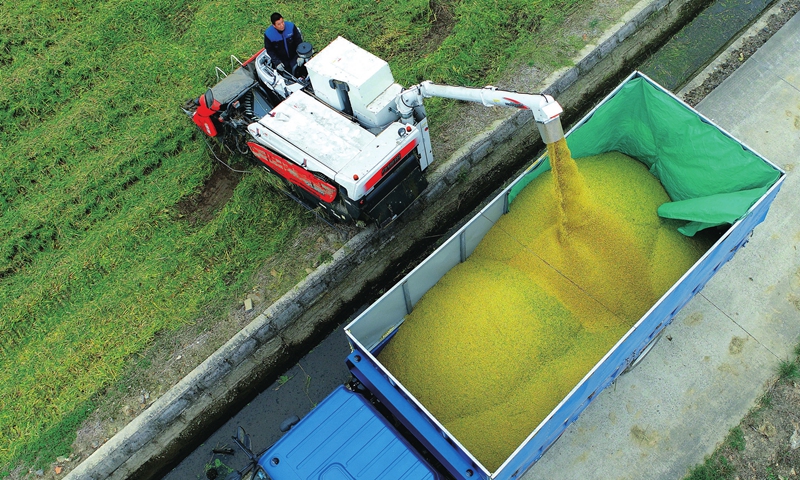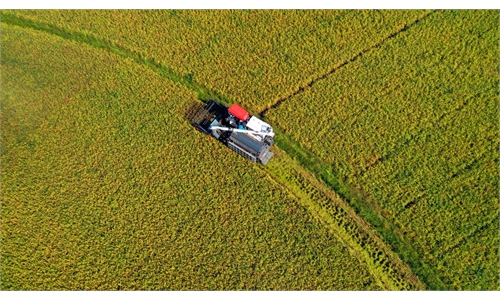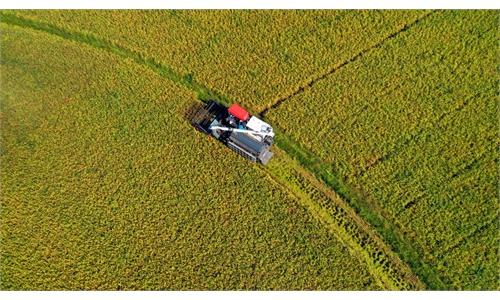China's grain output to hit new record in 2021 despite losses in heavy rain: ministry

A man operates a vehicle to ship newly harvested paddy at a modern agricultural demonstration base in Lujiang county, East China's Anhui Province on Saturday. Photo: cnsphoto
China's grain output in 2021 will set a new record by exceeding 650 billion tons for the seventh year in a row, an official of the Ministry of Agriculture and Rural Affairs said on Wednesday.
It is expected that the autumn grain yield will increase, and with 80 percent of the harvest completed, recent spells of prolonged rain will have a limited impact, Zeng Yande, head of the ministry's Department of Development and Planning, told a press conference.
The quantity and quality of summer grain also improved, with a total output of 145.8 billion tons, an increase of 2.965 billion tons. The area of high-quality wheat accounted for 37.3 percent, up 1.5 percentage points. The output of early rice was 28 billion tons, an increase of 725 million tons, and was up for the second consecutive year.
"Due to regional heavy rainfall this year, the harvest decreased in some areas - Central China's Henan Province, North China's Shanxi Province and Northwest China's Shaanxi Province. So far, 75 percent of the country's autumn grain has been harvested, four percentage points slower than usual," Zeng said.
However, the national grain output remained stable and even increased, due to the expanded planting area of autumn crops and some highly productive crops such as corn, Zeng noted.
"Even though the crops in the three provinces suffered great losses, the total damaged planting area in 2021 was around 100 million mu (6.67 million hectares), which is less than the average in the past 10 years of 360 million mu," said the official.
The average grain price rose 6.2 percent from January to September on a yearly basis, which was still under control, the ministry said, while vowing to ensure a stable grain market through releasing abundant stockpiles and securing nationwide logistics channels for fresh agricultural products.
Zeng also said that China has made progress in seed protection. At the end of September, China had collected 17,000 crop resources and conducted a census of 60 percent of the poultry and livestock resources, as well as 160,000 aquatic product farmers.
The country has built national seed resource bases for crops and aquatic products. The construction of a genetic resources base for poultry and livestock will start soon, according to the official.
Global Times



